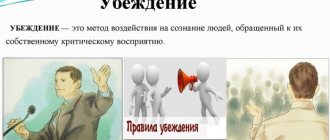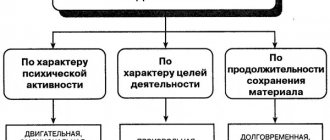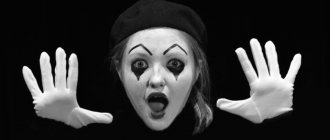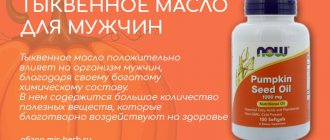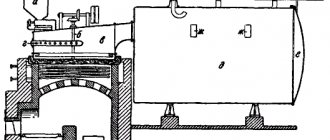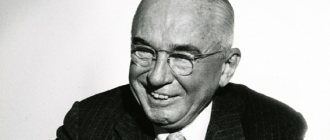An associative series is a set of some elements, concepts that are interconnected by some common feature. When you mention one element, another comes to mind. It is this ability of the brain to establish connections between objects and phenomena that allows us to create dreams, premonitions, and nostalgia.
The associative series has become a tool in various humanitarian fields. It is used in psychology, pedagogy and even esotericism. With the help of associative series, you can develop memory, thinking, intelligence, the ability for introspection, as well as unravel your own dreams.
In this article:
Development of intelligence and thinkingAssociative series in psychologyHow does it work?Art therapy and associative series
Development of intelligence and thinking
Photo by Wolfgang Hasselmann on Unsplash
The associative series is often used in intelligence tests. Some tasks involve working with associations. By completing test tasks, you can learn about the development of logic and erudition in yourself. The more trained your thinking is, the faster you find associative connections between objects and phenomena.
Children are taught this at preschool age. These are simple association games where you need to combine 2-3 objects based on a common characteristic. For example, you can add sea and sand to the sun. Or shoelaces. These are the simplest and most obvious associative series.
Associations are what a person acquires with experience, what he learns. Each child absorbs the basic ways to carry out associative series. By the way, an association test is used to diagnose schizophrenia. Patients with schizophrenia do not detect associative connections between objects, or they see associations that are far from obvious and indirect.
Solving various intellectual problems using associations allows you to train your thinking. You can easily find collections of problems or online resources for training associative thinking.
Association method
What is associative thinking
The name of this type of thinking speaks for itself. These are processes of indirect and generalized cognition and reflection of the surrounding world, based on associations.
A logical question arises: “What are associations?” This is a certain connection between different concepts or ideas that arises when one of them is realized. Such a relationship may be normal and logical for one person and completely contradictory for another.
Associative thinking helps people discover something new and expand the boundaries of knowledge of the world. For example, for one person the word “winter” evokes an associative connection with boredom and cold, for another with a beautiful snow-covered alley, for a third with birthdays and holidays. This is how the conceptual series expands, a person learns to think outside the box and creatively. People who have well-developed associative-figurative thinking are valued at work and perceive the world in cheerful colors
Therefore, it is important to develop this type of cognitive process from childhood.
Associative series in psychology
The associative series method is used in different psychological schools and directions: NLP, Gestalt psychology, art therapy, psychoanalysis. As you can see, not a single psychologist can do without associations.
A direction such as NLP (neuro-linguistic programming) uses the method of associations to consolidate some important skills or processes. For example, there is the “anchor” technique. It is used to commit something important to memory.
For example, you want to earn a certain amount for a new car. This goal energizes you and doesn’t let you go. In order to help the brain “tune in” to the desired goal, the anchoring method includes associations. You need to imagine that you have already achieved your goal and are driving the car of your dreams. Imagine vividly and in detail what you feel at this moment, do you think? What is happening around you: what does a new car interior smell like, what music is playing, or maybe you are driving past the embankment? What smells and sounds surround you? What pictures, images do you imagine when you think about your dream?
Having described in detail your dream in real embodiment, highlight the main accents in this picture. And come up with “anchors” for them. Perhaps these will be some symbols that you draw on a small piece of paper and put everywhere: in your wallet, in your desk, even on the refrigerator shelf. It is important that your gaze unexpectedly stumbles upon an anchor associated with your dream. Thus, the brain will constantly receive a signal associated with the goal. This will allow even unconscious mechanisms to pave the way for the dream.
You can use drawn symbols, small objects, anything as an anchor, the main thing is that it should remind you of your goal.
How it works?
In Gestalt psychology, associations are used in working with problematic human situations. For example, unpleasant symptoms in the body. When a person suffers, for example, from frequent headaches or stomach cramps. It is clear that the body is “signaling” something, but the meaning of the symptom is not obvious.
Working through an associative series will help with this. With the help of special questions you can understand any symptom of your body:
- Describe the symptom in detail, how do you feel?
- What are these sensations like?
Giphy
- Imagine the symptom as an image, what is it? Describe the shape, color, size, structure, temperature of this image/object/phenomenon. Examine the image in great detail, let it reveal itself.
- Imagine that this image is alive. What is he telling you? Listen, take a closer look at him. Why did he come into your body, what message did he prepare for you?
It is very important when working with an image to allow associations to flow freely, without relying on logic. Then you will be able to read your own body language. Of course, there is a lot of scientific literature on psychosomatics and you can read ready-made associations. But your body language may be different. After all, each person acquires an individual, unique set of associations throughout his life. There are general associative series, but they have unique nuances.
Among popular psychologists, Liz Burbo and Louise Hay are famous in the study of bodily associations. You can read their books, you will find a lot of interesting things there.
Philological sciences/3. Theoretical and methodological problems of language research
Ph.D. Volovich M.I., Budanova N.A.
Tver State Medical Academy, Russia
Structural features of associative terms of the sublanguage of medicine
Among the associative terms of the medical sublanguage there are units of various structural types. However, due to the fact that associative terminology is a conditionally distinguished group of units, and not a terminological system, it is characterized by a number of features.
Linguistic terms include word terms (non-derivative, derivative, complex, abbreviations); free phrases, where each of the components is a term and each can enter into two-way communication (migrating liver, migrating spleen, migrating testicle
and etc.);
non-free phrases in which components taken in isolation may not be terms, but in combination they are terms (hunger pain, clean/dirty seam, cooing noise
, etc.);
phraseological terms (cat purring, caesarean section, “cauliflower”, telegraph style
, etc.);
sentence terms ( “the leg is mowing, the hand is asking”).
One of the most debated issues in modern linguistics is the question of whether multicomponent terms belong to a special type of phraseological units. An attempt to consider terminological phrases from the point of view of their phraseology goes back to the doctrine of phraseological units by V.V. Vinogradov.
Research in recent years, conducted at the intersection of terminology and phraseography, has made it possible to distinguish terminological phraseological units into a separate group [Malina 1999] - these are mainly phraseological combinations that are simultaneously two- or multi-component terms. Of course, if we take the reproducibility/constructability of a terminological phrase in a specialist’s speech stream as the main criterion for phraseology, most of them should be recognized as phraseological units. However, the separation of such multicomponent terms into a special subclass of phraseological units, from our point of view, is possible only in a stylistic, and not in a semantic aspect. A similar point of view was expressed, in particular, by N. M. Shansky. Indeed, among the associative terms of the sublanguage of medicine we find combinations that differ in the degree of semantic unity of the parts that make them up. For example, terminological phrases caesarean section, angina pectoris, delirium tremens
and a number of others, from the point of view of phraseological theory, are phraseological adjuncts;
the terms heel spur, duck gait, frog position
can be classified as a group of phraseological units, since they evoke certain images in the mind;
terminological; units threadlike pulse, paradoxical breathing, nihilistic delirium
are terminological combinations.
The array of associative terminological units we analyzed is 2612. The sources of language material were the “Encyclopedic Dictionary of Medical Terms”, the Russian version of the Stedman Dictionary, the “Russian-English Medical Dictionary-Phrase Book”, as well as textbooks on normal and pathological anatomy and internal diseases. The overwhelming number of terms under study are two-component phrases. There are few associative terms-words (3%), three-component phrases - 9.3%, multi-component - 5.6%, terms-sentences - a few. Almost all terms-words are derivatives. Among the most productive word-forming affixes are -ism (gambrinism, priapism, masturbation, sadism, lunacy
etc.),
-otk (scabies, consumption, tabes,
etc.),
-its (urticaria, thrush, breastfeeding), -ost (elephantiasis), -stv(o) (reasoning), -ts}(iya) ( sodomy), -uh (a) (jaundice, rubella, scrofula, prurigo)
and some others.
We examined compound terms and terminological phrases to identify the component in them that is the “core” of the associative nomination, since when explaining such terms to foreigners they inevitably have to be “divided” into components, even if the general meaning of the terminological phrase cannot be reduced to the meanings of its components . The most significant turned out to be a group of terminological phrases, the associative nature of which is motivated by the presence of a derivative adjective. First of all, these are adjectives with assimilation suffixes -chat- (tubular bandage, perforated fracture, stepwise gastrectomy, lattice flap of skin, needle shower, lobulated kidney, fenestrated placenta, banded keratitis, filamentous keratitis, membranous cataract, rosette cataract, button-shaped probe, serrated - clawed tweezers, capitate bougie:, ringed hair
and etc.);
-ovat- (knotted seam, grooved probe, doughy skin consistency,
etc.);
-ist- (watery discharge, curdled discharge, foamy sputum, granular casts, nodular liver, spotted spleen,
etc.).
Among the derivative adjectives that create the “imagery” of terminological phrases, a number of relative adjectives in a figurative meaning stand out: with the suffix -n- (dagger pain, scarf bandage, furrier suture, purse-string suture, mattress suture, patchwork amputation, fan shower, penal hypospadias, crescent line, marble leather
, etc.);
with the suffix –ov/-ev (thimble crown of the tooth, thymus gland, sago lumps of mucus, crimson tongue, chalk tongue, pectineal femoral hernia, tubercular syphilide, shrapnel part of the eardrum
, etc.);
with the suffix -ichesk- (athletic constitution, topographic percussion, geographical language, cylindrical bur
, etc.);
with the suffix -sk- (knot, equine foot, giant hernia
, etc.).
Possessive adjectives also create associativity (bull's eye, cat's ear, goose bump, duck walk, Achilles tendon, frog belly
and etc.). In total, the group of terminological phrases, in which derived adjectives serve as a means of creating associativity, amounted to 30.2% of the total number of associative terms in the sublanguage of medicine.
A quantitatively significant group consists of complex adjectives containing root morphemes expressing assimilation: -prominent (spherical bur, sausage-shaped feces, waxy cylinders, sickle-shaped cell, spear-shaped perforator, mantle-shaped pneumothorax, pterygoid scapula, pisiform bone
and etc.);
-shaped (hammer finger, disc-shaped abdomen, imbricated mycosis, pendulum-shaped nystagmus, cruciate incision, appendix, spoon-shaped vaginal speculum, spasmodic thinking,
etc.),
-like (lion-like facial expression, abrasion-like penetrating ulcer, rubber-like tumor
, etc.).
Among the complex adjectives, a group formed from various signs, most often letters, stands out (T-shaped drainage:, U-shaped drainage: T-shaped elevator, S -shaped curved handles of forceps
, etc.).
The group of complex adjectives with the morphemes -prominent, -shaped, -similar
constitutes 17.5% of the total number of terminological units studied.
A large group of terminological phrases is classified as associative due to nouns that create imagery (plaster bandage-belt, ozokerite cake, eye orbit, tear lake, “fern” symptom, “mosquito” type clamp, “tsack” type clamp, lytic cocktail, lung root , bone labyrinth
and etc.). This group of phrases makes up 30.5% of all associative terms.
A statistical study of an array of associative medicine terms confirms the conclusions obtained based on the analysis of other terminological layers of the sublanguage of medicine. “The level of morphology of the scientific style demonstrates a clear predominance of adjectives and nouns compared to the verb.” [Prokhorova 1984: p. 77].
The problem of verb termination is controversial in modern terminology, however, increasingly, researchers, following V.P. Danilenko, recognize that the set of terminological concepts is wider than the semantic possibilities of a noun.
The array of terminological phrases we studied indicates that the verb is the most important means of creating associativity. Although there are few compound terms in which the verb directly acts as a component that gives rise to imagery, only 1% (“cover” the instrument table, scrape out a cavity, peel out a tumor, cut out a skin flap, bring down the temperature
etc.), the figurativeness of terminological phrases goes back to verbs, in which the metaphorized component is an active or passive participle
(gnawing, pressing, stabbing, aching, encircling, pulsating, cutting, squeezing, shooting pain; hidden, forgotten, lost drainage:; wrinkled bladder
, etc.), as well as a verbal adjective
(uncontrollable vomiting, hanging heart, atrial fibrillation, rocking nystagmus
, etc.).
Similar terminological units make up 7.5% of the total. Also associated with the corresponding verbs are nominative terminological units, the core components of which are verbal nouns (hernia prolapse, test for “inflammation”, fluid ripples, splitting of the heart tone, ventricular flutter, sliding symptom, rumbling in the abdomen, friction noise, landing symptom
, etc. ) - This group of terms is not numerous - 2%.
Finally, the last of the groups of terms we examined are made up of multicomponent terminological units, the associative nature of which is determined by an indecomposable phrase - phraseology (symptom of “whiplash”, cogwheel phenomenon, delirium of high origin, symptom of “dark glasses”, stool in the form of rice water, sella turcica, hourglass stomach, pinhead wound entrance, crumpled tissue paper symptom, cleft palate, monkey's paw, stearin stain phenomenon
and etc.). This terminological group makes up about 7% of the total number of associative terms in the sublanguage of medicine.
Literature.
1. Malina Z.M. Terminological phraseological units and their presentation in
Dictionaries of the Russian language: Author's abstract. dis. ...cand. Philol. Sci. - M., 1999.
2. Prokhorova V.N. Lexico-semantic education of Russian
terminology: Author's abstract. dis. ... Dr. Philol. Sci. - M., 1983.
